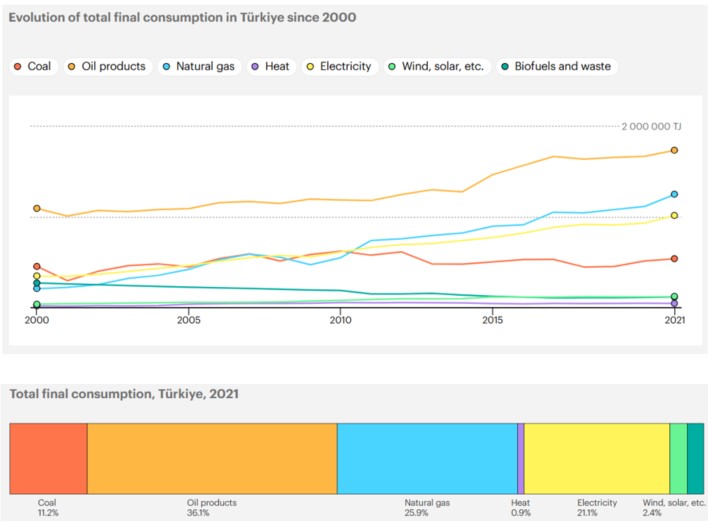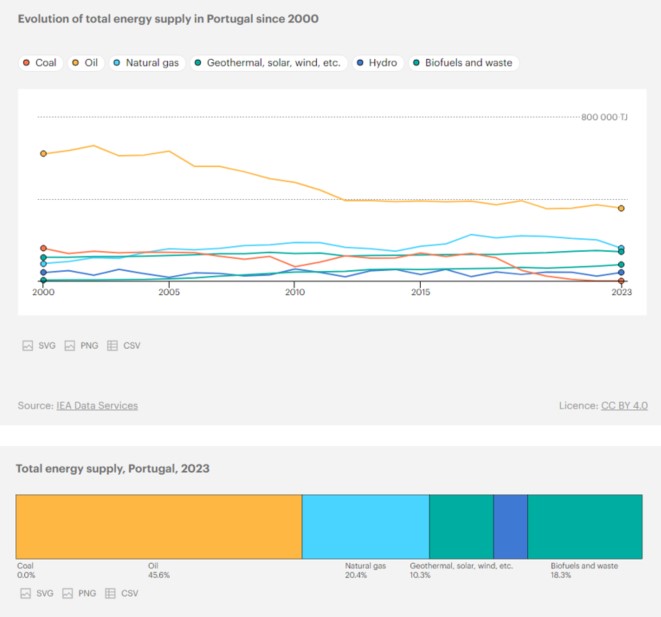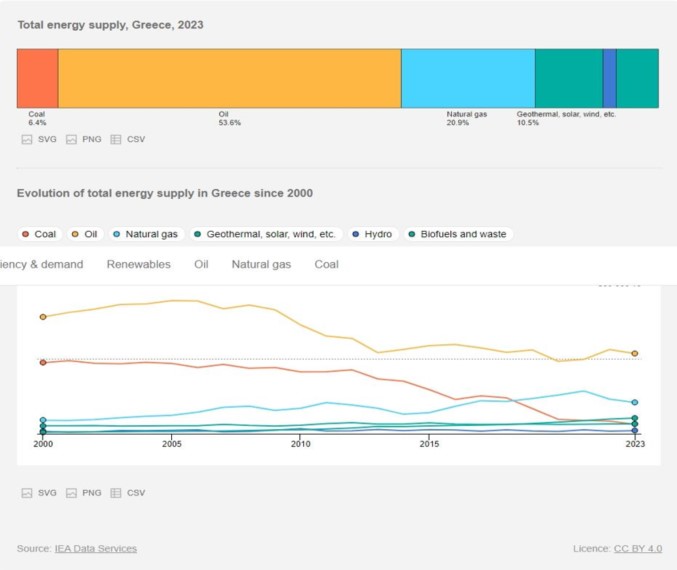- Definition and Types of Energy
- Myths And Misconceptions About Energy
- The Relationship Between Energy and Environment
- Climate Change and Carbon Footprint
- Greenhouse Gas Effect
- The Role of Human-Induced Greenhouse Gases and Energy Consumption
- Energy Efficiency and Sustainability
- Renewable Energy Sources and Future Perspectives
- Play and Learn
- Solar Energy Conversions
- Solar Energy Worldwide
- Solar Energy in Partner Countries
- Positive and Negative Impacts
- Technologies for Harnessing Solar Energy
- Solar thermal energy technologies and applications
- Electricity Generation Methods
- Passive Heating and Cooling of Residences with the Sun
- Concentrator solar power (CSP) systems and electricity generation
- Systems and Applications That Generate Electricity directly from solar rays
- Photovoltaic Cells and Panels
- Domestic PV Systems
- Off-Grid PV Systems
- Hybrid Connected Systems
- Materials Used in PV Cells
- Play and Learn
Non-Renewable Energy Use in Partner Countries
Non-renewable Energy in Türkiye
Türkiye is a country highly dependent on fossil fuels. Natural gas and oil imports constitute a significant portion of Türkiye's energy consumption. However, the increasing investments in renewable energy have begun to reduce the share of fossil fuels. In the realm of nuclear energy, projects such as the Akkuyu Nuclear Power Plant are contributing to the diversification of energy sources.

Non-renewable Energy in Portugal
In 2000, about 78% of the energy consumed in Portugal was from coal and oil, while in 2023, the non-renewable sources represented just 64% of the global energy consumption in the country. In 2023, Portugal was using 20% gas, whose consumption increased 87% compared with 2000, and 44% oil, with a decrease of 43% in the same period. Coal was banned, with the last coal power station closing in 2023.
Since 2000, Portugal has made significant strides in diversifying its energy mix, with a strong emphasis on renewable energy sources, supported by substantial investments in wind, hydro, and solar power, leading to a gradual but strong decline in the reliance on fossil fuels.
Over the past few years, the country has seen a notable shift toward cleaner and more sustainable energy production methods. In 2022, Portugal was in the 4th place in the European Union, with a 61% share of electricity coming from renewable energy sources Ref

Non-renewable Energy in Greece
Greece has historically relied heavily on fossil fuels, particularly oil and natural gas, for its energy needs. In 2023, oil accounted for 54% of the country's total energy supply. However, the nation has been actively reducing its dependence on lignite, a type of coal that has significantly contributed to carbon emissions. From 2005 to 2021, the share of lignite-fired electricity generation decreased from 60% to 10%, with plans to phase it out entirely by 2028. Concurrently, Greece is investing in natural gas infrastructure and expanding renewable energy sources to diversify its energy mix and enhance sustainability.

Non-renewable Energy in North Macedonia
North Macedonia's energy consumption is primarily derived from fossil fuels, with significant contributions from coal and oil. In 2022, coal accounted for 32.2% of the total energy supply, while oil contributed 44.6%. The country still depends heavily on coal-fired power plants for electricity generation, with 47% of total electricity production coming from coal in 2022.
However, North Macedonia is undergoing a transition towards cleaner energy sources, with renewables and hydropower making up around 9.4% of the energy mix. Efforts to phase out coal by 2030 are underway, with an increasing focus on solar and wind energy to diversify the energy mix and reduce carbon emissions.
This overview highlights North Macedonia's ongoing efforts to reduce reliance on fossil fuels and transition to renewable energy sources while balancing the economic and infrastructure challenges posed by its heavy dependence on coal and oil.
